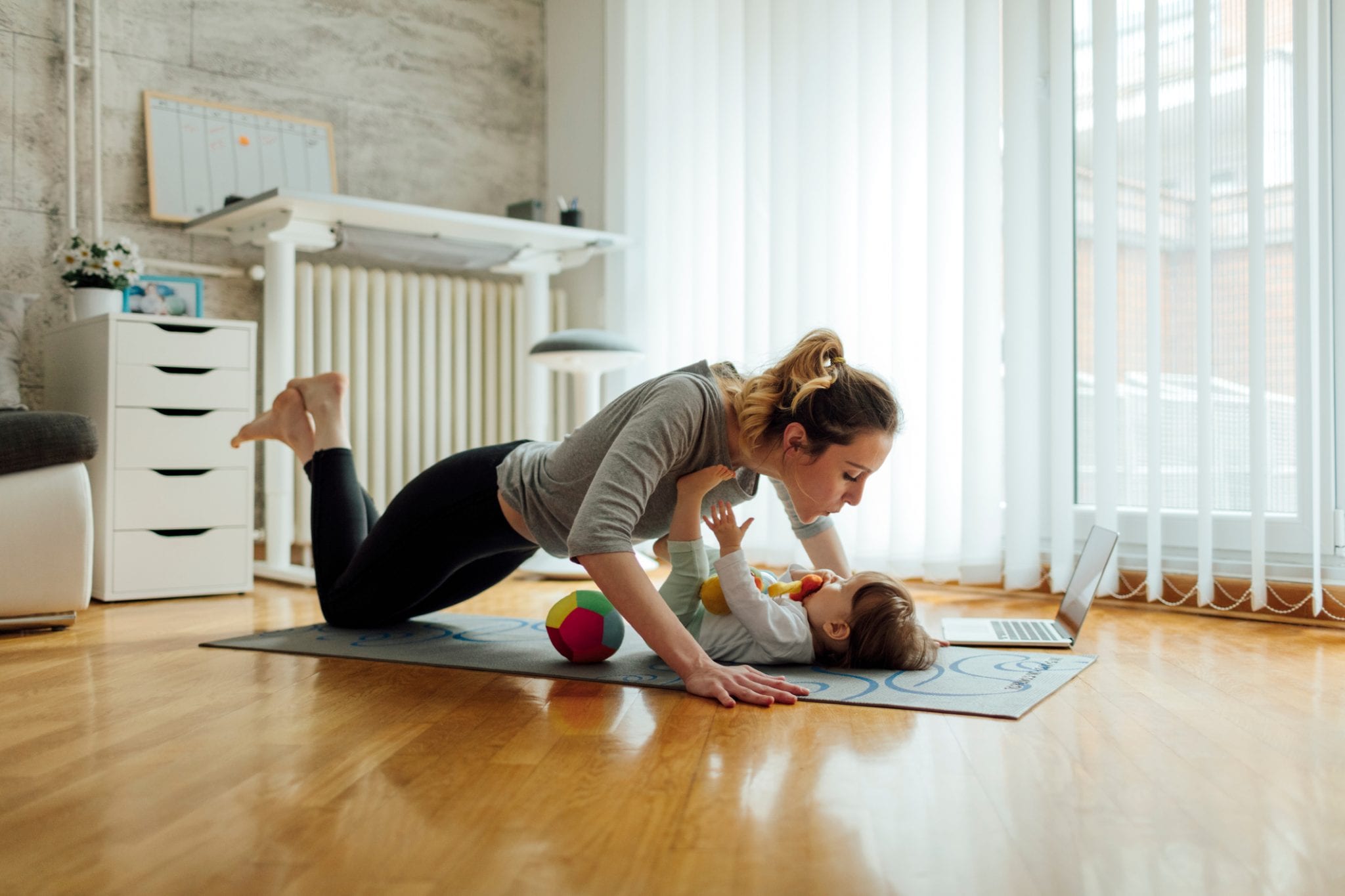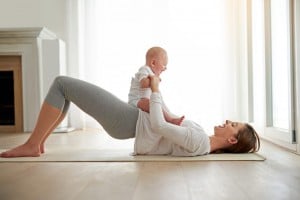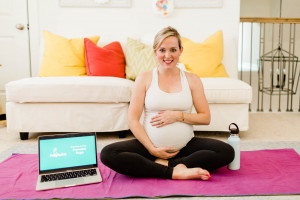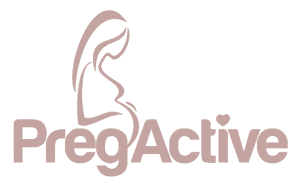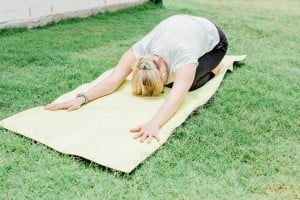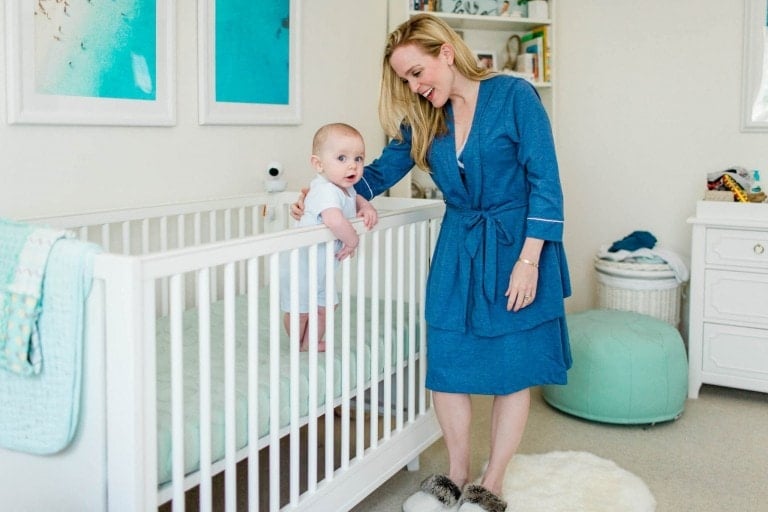In another article, I talked about seven tips to prevent pregnancy stretch marks. But another common topic among moms with stretching bellies is what to do AFTER you’ve had your baby. Many moms are confused about how to get rid of loose skin after they lose their baby weight but still have a “baby belly.”
There are many factors to consider when it comes to getting rid of loose skin after having a baby. Much of this depends on how much weight you gain during pregnancy and how much your stomach and skin stretch. Also, what does your genetic makeup look like regarding skin elasticity and collagen? The problem can be extremely frustrating if you’re working hard to lose weight postpartum but aren’t getting the stomach “look” you’re working towards.
You may not be able to get rid of the loose skin entirely without surgery. However, there are things you can do to improve the condition of loose skin.
First, Ensure the Issue You’re Dealing With Is Loose Skin and Not Extra Body Fat
While calipers are useful for this type of testing, most moms don’t have access to this type of test. Instead, here’s an at-home trick: Pinch the area you’re concerned with. If you can grab more than a few millimeters of skin, there’s more fat in there to lose. Until you lose that fat, your skin has no reason to return to its former size and tightness.
Most women must be at or below 17-18% body fat before addressing the skin issue. In many cases, when you work on lowering your body fat percentage first, you will burn off that stubborn subcutaneous fat on your stomach, and the problem of what appears to be loose skin will take care of itself.
If that’s not the case for you, though, and you still wonder how to get rid of loose skin after weight loss, here are a few tricks that have worked for both my clients and me.
4 Tips to Get Rid of Loose Skin after Pregnancy
1. Lose Weight Slowly
So many women are so excited to lose their baby weight. But remember, even amidst the excitement, to do so in a slow, healthy, and sustainable way. Losing weight too quickly will only add to the problem of loose skin. If you lose weight fast, you will lose both fat and muscle. Muscle is a key factor in keeping your metabolism working properly and giving you the tight, toned, lean shape you want.
Simply put: Muscle helps your skin to keep its shape. When you lose weight, your skin needs time to adjust to its new shape. If you lose it too quickly, you may end up with even more loose skin. Allow your skin time to regain its elasticity. A general rule of thumb is to aim to lose around 1-2 pounds per week.
2. Stay Hydrated
Water will help hydrate your skin, making it more elastic. It will help your body to burn calories more effectively. On top of that, it will help reduce water retention in your belly area, making the appearance of loose skin less noticeable. Here’s a good reason to start if you haven’t been drinking your H20.
Besides making sure your skin stays hydrated from the inside (In general, you should try to drink between half an ounce and an ounce of water daily for each pound you weigh.1), some research suggests that lotion and vitamin creams may also help outer layers of your skin stay hydrated and improve appearance.2 Use a lotion on your skin that contains collagen and vitamins E, A, C, and K to help firm up loose skin. When you apply the lotion, massage it in. Massaging will improve blood flow to the area, which helps your skin to appear firmer. Try massaging lotion to any loose skin once or twice a day.
3. Lift Weights
Many moms miss the connection between lifting weights and tightening loose skin. They are afraid to strength train for fear of “bulking up,” but many women don’t understand that strength training will help improve your overall muscle tone and give you more lean muscle, resulting in a higher metabolism rate and a tighter, more toned look. Gaining muscle underneath the loose skin can help you tone up and tighten up your stomach area. And as a bonus, the more muscle you have, the more calories you burn. Lifting weights will improve your body composition (the percentage of lean muscle to body fat). Improving your body composition will reduce fat not just along your waist and underneath loose skin but all over your body.
4. Consider your Cortisol
Hormones play a HUGE part in fat loss and tightening and toning your body.3 What you may think is loose skin might be extra body fat stored in your belly. Specifically, when it comes to loose skin after pregnancy, the hormone cortisol plays a big role. Cortisol is a catabolic hormone (causing a breakdown of lean muscle).4 The breakdown of this muscle leads to decreased metabolic capacity and increased fat storage. Cortisol harms the tightening of the muscles as well as the tone to reveal the muscle shape. When cortisol levels are high for long periods, your body can store food as fat and refuse to burn the fat that you do have. Essentially, your body is saving fuel. And for some women, this fuel ends up being stored right on their belly, appearing like it’s just loose skin after pregnancy.
Here are a few tips to help:
- Get Enough Sleep: Lack of sleep signals your body to release cortisol.5 The first and most important thing you can do to balance cortisol is to get enough sleep and to make rest and recovery a priority.
- Avoid Overtraining: Long-duration workouts cause elevated cortisol levels and can unnecessarily stress your body.6 For optimal recovery and hormonal balance, focus on short-duration, high-intensity workouts.
- Include stress-reducing activities: When possible, try to lower cortisol by restorative activities like leisurely walking and having quiet time to distress (even if it’s just 5 minutes!).
- Consider your caffeine: If you believe you have issues with cortisol or suffer from anxiety, pay close attention to your caffeine intake. There is nothing wrong with a couple of cups of coffee for people with normal cortisol levels. But for people with high cortisol levels, caffeine needlessly spikes cortisol and may be harmful.7 Remember, the problem is not the initial spike in cortisol but rather the elevated levels over time. Consider limiting caffeine into the morning hours or cutting caffeine altogether for a few weeks to see your body’s response.
In addition to the tips above, you may want to consider some things to improve your skin’s elasticity. When skin loses elasticity, it can no longer return to its proper size.
Skin elasticity naturally decreases as we age, but this is an issue that women of all ages face. Research shows that this is primarily an inside job in terms of improving elasticity, meaning the foods and vitamins we eat.8
If you can’t get all the vitamins and minerals you need from whole foods, the supplements we take can help. Look for things like Vitamin C: which is essential for producing collagen and elastin, Vitamin E: which works inside your skin as an antioxidant, and Vitamin D: which helps regulate the growth of new skin cells.9,10,11

